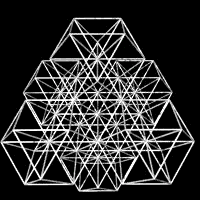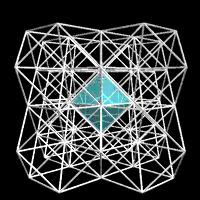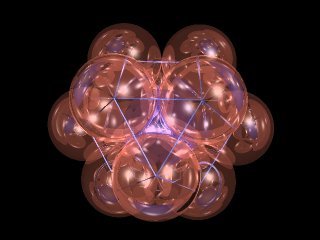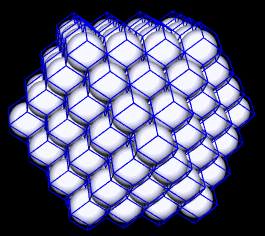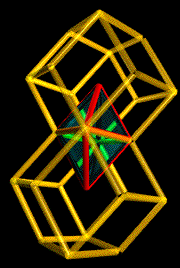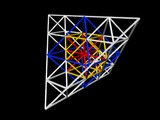The Isotropic Vector Matrix
Nature's Coordinate System
The tetrahedron combines with the octahedron to fill space, providing a lattice known to crystallographers as the face-centered cubic (fcc), and to Fuller as the isotropic vector matrix (IVM). Fuller emphasizes the IVM over the more familiar xyz apparatus, arguing that our fixation on cubes and right angles goes against the grain of nature, and begets a lot of unnecessary awkwardness in our curriculum.
This isotropic vector matrix is a lattice of rods connecting the centers of spheres of equal radius. Every sphere is a nucleus surrounded by 12 others in a cuboctahedral conformation (not the only option). The rods, or stress vectors, define tetrahedral and octahedral voids, of volume one and four respectively.
The IVM is also known as the octet truss and is quite widely used in architecture and engineering. As a uniform dispersion of points in space, the IVM models an ideal gas, freeze-framed to define average molecular positions as per Avogadro's Law.
